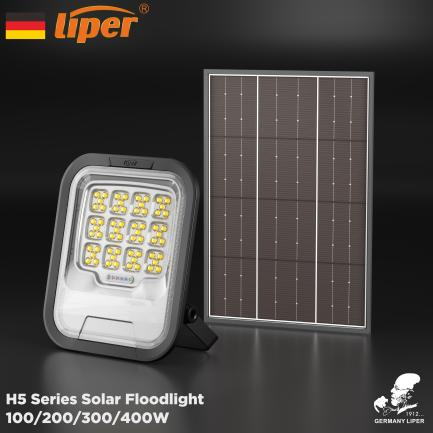What is the battery capacity?
A battery's capacity is the amount of electric charge it can deliver at a voltage that does not drop below the specified terminal voltage. Capacity is usually stated in ampere-hours (A·h) (mAh for small batteries). The relationship between current, discharge time and capacity is approximated (over a typical range of current values) by Peukert's law:
t = Q/I
t is the amount of time (in hours) that a battery can sustain.
Q is the capacity.
I is the current drawn from battery.
For example, if the solar light whose battery capacity is 7Ah is used with 0.35A current, the usage time can be 20 hours. And according to the Peukert's law, we can know that if the battery capacity of the solar light is higher, it can be used for a longer time. And the battery capacity of Liper D series solar street light can reach 80Ah!

How do Liper ensure the battery capacity?
All the batteries used in Liper products is produced by ourselves. And they are tested by our professional machine with which we charge and discharge batteries for 5 times. (The machine can also be used to test battery circle life)


Besides, we use lithium iron phosphate (LiFePO4) battery technology which is proved that it can provide the fastest charging and energy delivery, discharging all its energy into a load in 10 to 20 seconds in the experiment in 2009. Compared to other kinds of batteries, LFP battery is safer and has long lifespan.
What is the efficiency of solar panel?
A solar panel is a device that converts sunlight into electricity by using photovoltaic (PV) cells. And Solar panel efficiency is the portion of energy in the form of sunlight that can be converted via photovoltaics into electricity by the solar cell.
For Liper solar products, we use mono-crystalline silicon solar panel. With a recorded single-junction cell lab efficiency of 26.7%, mono-crystalline silicon has the highest confirmed conversion efficiency out of all commercial PV technologies, ahead of poly-Si (22.3%) and established thin-film technologies, such as CIGS cells (21.7%), CdTe cells (21.0%), and a-Si cells (10.2%). Solar module efficiencies for mono-Si—which are always lower than those of their corresponding cells—finally crossed the 20% mark for in 2012 and hit 24.4% in 2016.




In a short, don’t just focus on the power when you want to buy solar products! Pay attention to battery capacity and the efficiency of solar panel! Liper produces the best solar products for you all the time.
Post time: Oct-24-2024








